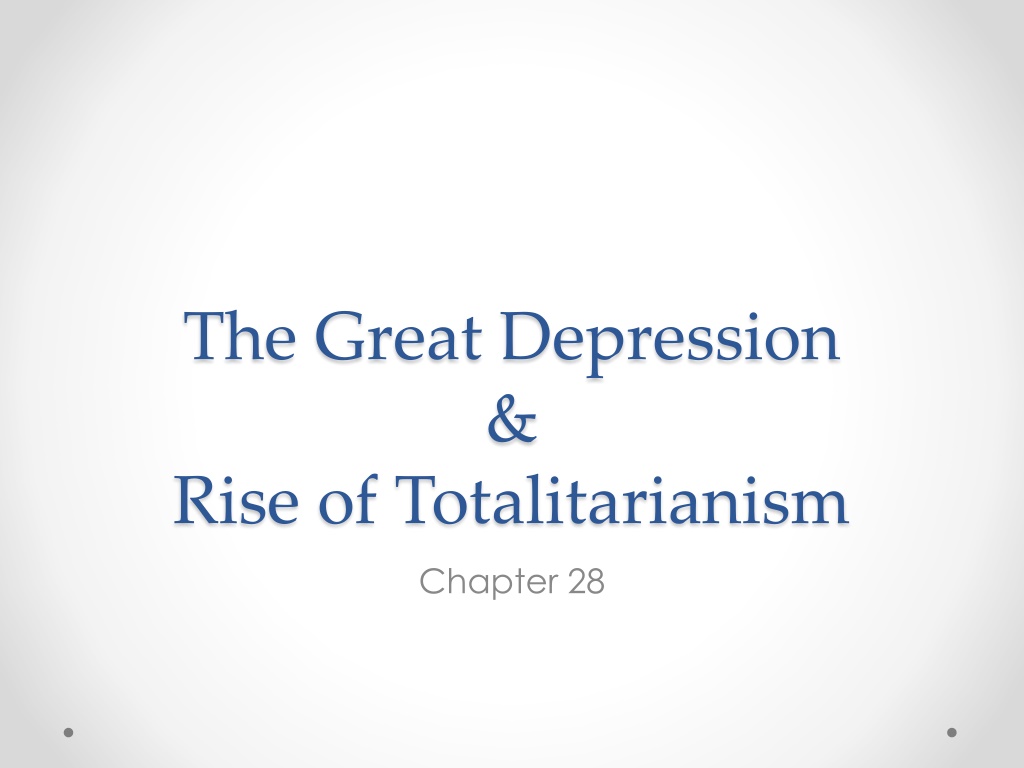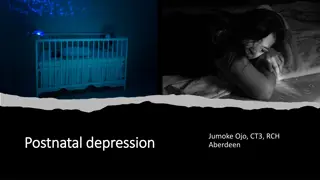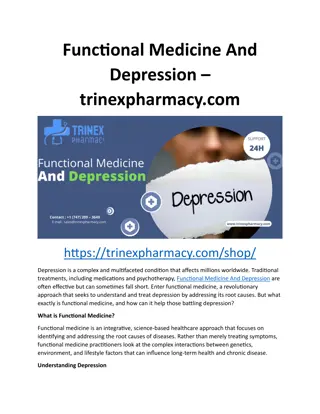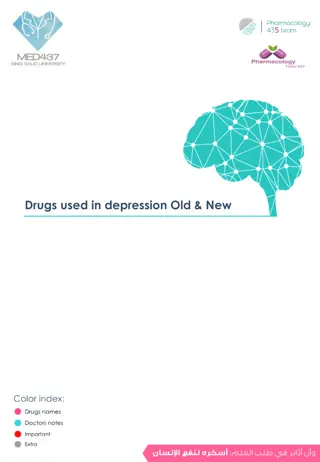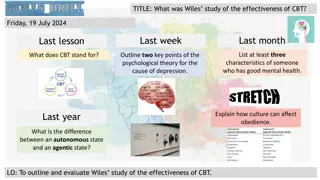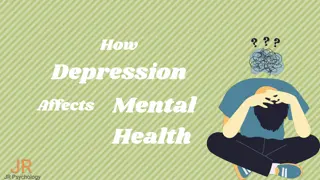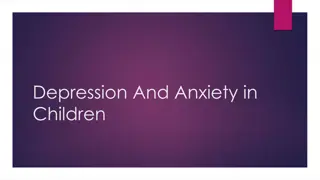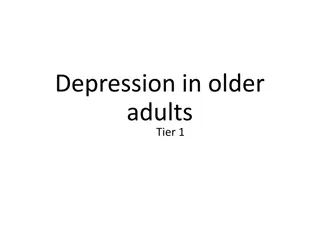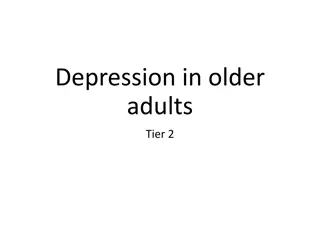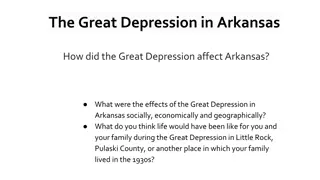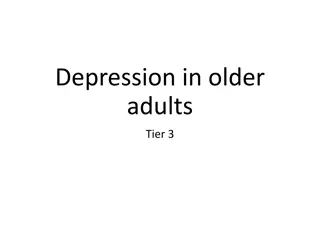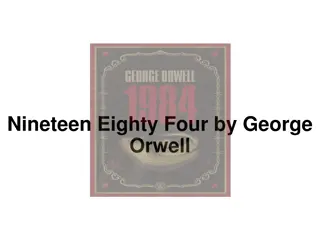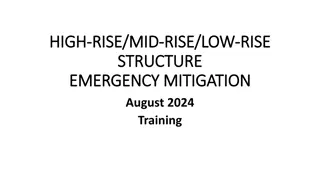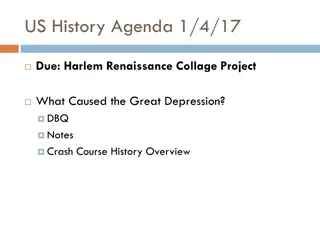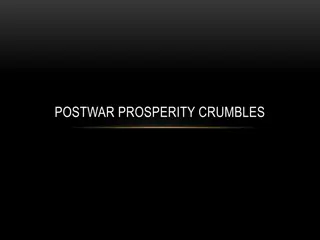The Great Depression & Rise of Totalitarianism Overview
The chapter covers the postwar prosperity turning into depression, protectionism in global economies, stock market speculation leading to the 1929 crash, and the impact of the Great Depression on national economies like Britain and France. It also delves into the roots of Irish nationalism and the eventual division of Ireland.
Uploaded on Mar 05, 2025 | 0 Views
Download Presentation

Please find below an Image/Link to download the presentation.
The content on the website is provided AS IS for your information and personal use only. It may not be sold, licensed, or shared on other websites without obtaining consent from the author.If you encounter any issues during the download, it is possible that the publisher has removed the file from their server.
You are allowed to download the files provided on this website for personal or commercial use, subject to the condition that they are used lawfully. All files are the property of their respective owners.
The content on the website is provided AS IS for your information and personal use only. It may not be sold, licensed, or shared on other websites without obtaining consent from the author.
E N D
Presentation Transcript
The Great Depression & Rise of Totalitarianism Chapter 28
End of Prosperity Postwar prosperity turned to depression by end of 20 s Farmers in Africa, Australia, India, New Zealand, NA & SA increased production for Europe o American farmers took loans for capital goods o 1918 demand for crops and prices dropped debt crisis
Protectionism Global Economies led to economic nationalism o Protectionism: nations tried to protect foreign industries from competition by limiting trade o Est tariffs on import of goods failed policy o Americans loaned $$$ to Europeans to purchase American goods
Speculation Market Speculation stock market investments o 1920 s buying on margin borrow money to purchase stock o Value rose stock sells loans are repaid, value falls loans aren t repaid October 29, 1929 Black Tuesday o NYSE panic s in face of economic downturn run on the NYSE o Bank runs started as investors confidence fell o Thousands of banks, farms, factories and individuals forced into bankruptcy
The Great Depression NYSE Crash beginning of the 10 year Depression o Prices, wages fell & unemployment soared o 1932 30 million unemployed worldwide poverty amidst productivity o Economic nationalism made the depression harder to recover from o Great Britain tried giving low interest loans to industry raised tariffs o France stayed away for a few years when hit led to political instability 1933 alone 3 changes of govt o Destroyed the Weimar Republic in Germany
Ireland 1800 s Nationalists demand self rule o 1914 independence not met promised self rule post WWI o Easter Rising: April 24, 1916 revolt Irish leaders executed 1918 Sinn Fein Irish seats in Parliament o Declared themselves rep gov t for Irish Republic o Irish Republican Army (IRA) 1922 Settlement divided Ireland in 2 o Catholic Ireland (South) self-governing free state (British Subjects) o Protestant Ireland (North) remained in the UK o Not all were happy civil war continued o 1949 Irish Free State becomes independent
Fascist Dictatorships Benito Mussolini & Italy o Socialist -> Extreme Nationalist during WWI o Created the Fascist Party Nationalistic & Militaristic Relied on dictatorship & totalitarianism opposed democratic principles 1stFollowers o Soldiers, Wealthy landowners, Manufacturers & lower middle class o Cooperation b/w labor & management to restore the Italian economy Communism Fascim Appealed to the working class Upper & Middle Class Society w/o Social Classes Preserve current class system Communal Property Private Property
Mussolinis Rise to Power Black Shirts removal of Socialists o Broke up strikes, intimidated voters & drove elected officials from office o October 1922 Black Shirts meet in Rome o Purpose: Defend Italy from Communism o Reaction: Parliament (Liberals) ask for Martial Law Cabinet resigns o Resolution: Mussolini becomes Premier & heads a coalition gov t In Office: Dictatorship in process o Appointed Fascists in the central gov t o Election Law: Party w/most votes = 2/3 of seats in lower house
Mussolinis Govt 1925 Head of Gov t o Controlled Ministry of War o Controlled Gov t policy through Grand Council of Fascist Party Dictatorship has arrived! o Opposition parties disbanded o No Basic Freedoms: press, speech & trial by jury o Gov t controlled labor unions o Strikes illegal o Italy becomes a police state
Corporatism Italy becomes a Corporatist State o Representation based on area of economic activity o Major areas: agriculture, commerce, manufacturing & transportation o Rep s of gov t met with labor & management to set wages, prices & working conditions o Unions & Business leaders expected to work with Mussolini s gov t & each other for the state
Weimar Republic 1920 German Constitution drafted o German Federal Republic Weimar Republic o Traitor s to German interest (Treaty of Versailles) o Faced unemployment & hyperinflation o Gave up control of major industrial lands Reparations = Hyperinflation o 1922 50,000 Reichmarks (Marks) : 1 U.S. Dollar o 1923 1,000,000,000,000 : $1 o 1924 4,200,000,000,000 : $1 o Rentemark s were created at the end of 1923 4.2 Rentemark s were = $1 Beer Hall Putsch o 1923 attempt to overthrow the republic Hitler Led
Nazi Party & Hitler Nazi National Socialist German Worker s Party o Nationalistic, anti-Semitic & Anti- communist o Hitler head of Party 1921 o 1927 Anti-Semitic ideology transformed into active discrimination o Promised to repeal the Treaty of Versailles o Restore Germany s military power o Buiild a Greater Germany o Believed Germans were racially superior (Aryans) o Blamed Jews for Germany s problems Threatened the purity of the Aryan race o Hitler eliminated political opponents via political skills and violence
Hitler in Power January 1933 Hitler appointed Chancellor o Used private Nazi army to strong arm members of Reichstag o Der Fuhrer The Leader o Turned Germany into a police state (no unions, opposition parties or papers) o Gestapo used to profile inferior races Third Reich o Third Empire of Germany o 1930 s secretly rebuilt military o 1936 moved troops to the Rhineland violated ToV o 1936 Rome-Berlin Axis: Alliance w/Mussolini
Russia Under Lenin 1917 Russia taken by Communists 1922 Russia -> Union of Soviet Socialist Republics o USSR divided into 15 separate political republics in a federal union o 1918-1921 Vladamir Lenin is the leader (Russian Civil War b/w Whites & Reds) Lenin s War Communism o Nationalized Industry keep food and weapons stocked o Didn t work production was down since WWI o Collapse & Social disorder started
New Economic Policy War Communism Failed NEP new approach Gov t controlled: Heavy industry, communication, transportation & the credit system o NEP married the Public and Private Sectors (Free Enterprise) o Buy, sell & trade farm products o Small business among peasants was permitted o Nepmen: Soviet middlemen traded domestic goods & materials w/manufacturers Agriculture Changes to collectivization o Revolution Wealthy farmland given to peasants o Collective farms created: pooled land where people worked in groups o Shared machinery
